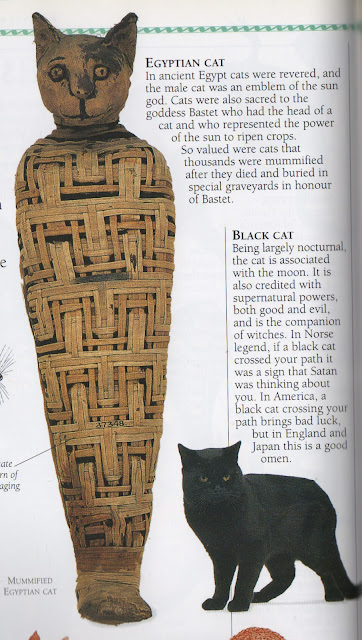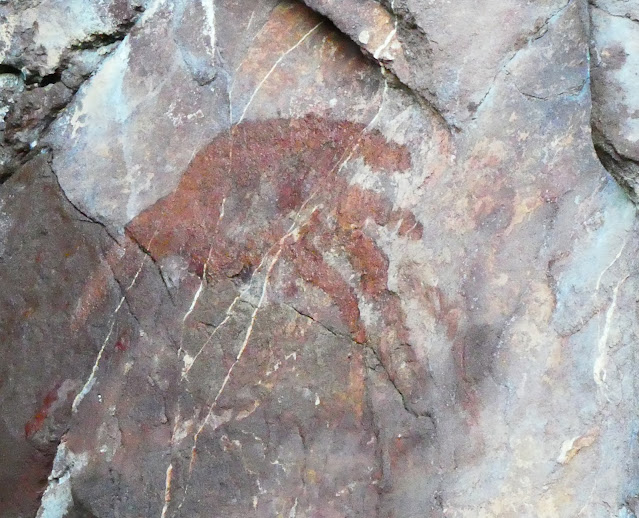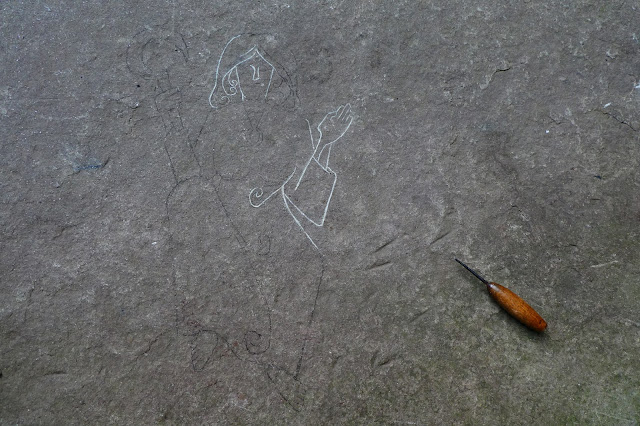Thoughts on Feline Divinities and Matriarchy in the Poetic Text
While I currently have about 80,000 words writen of the epic poem component of this project - what is in effect 'The Gyldland Saga' itself (though still a working title) - and most of the writing still to be done is linking material (followed by extensive editing), I'm certainly open to introducing new ideas, scenes, or themes if they are relevant and worthy.
One such is the structure and nature of the Rockcats' divine lineage - the feline people from whom the heroine of the whole work originates. The idea was to create a heroic figure who had none of the qualities of traditional epic heroism - while wise with words and healing-craft, she is not strong, is middle-aged, overweight, non-human and non-male. She grows slowly and reluctantly into her destiny, as unlikely as it is. Her very name, 'Womba' - derived from the OE word for 'womb' - is, as various characters remind her, a misnomer, as she is past child-bearing age (which in certain systems of patriarchal socio-cultural thinking is the only real value of female members of human society) - but she may be 'pregnant' with something even greater, i.e a heroic destiny which affects nations, histories and peoples. (There could also be read a certain 'queerness' inherent in her Platonic relationship with Gerthild, to go even further beyond the traditional characteristics of heroism).
The point of that was that she is the exception to her society and her clan, whose chiefs are always male (though not by any system of law, but rather based upon martial prowess), and through her exceptional life she is able to overturn, single-handedly, her people's own expectations. The need for a matiarchal culture - to offset the patriarchal Ulfhednaar - is obvious, but this already seemed to be inherent in the culture of the Ylfu (elf-like people), whose prime deity is the slain sun-queen Leoma (in what could be an unconscious gender-shifting of the Christ story) and whose greatest warriors and heroes are all female, based upon a complex (and utterly incorrect) code of vengeance derived from the dark/light duality and the 'death of the sun' motif which is the heart of the Leoma myth. I also felt like avoiding the cliché that cats are often viewed as traditionally female, although in mythological terms this is sometimes the case:
As a result of all that, Rockcat mythology has also been primarily patriarchal - their patron lord and father is Ullek, the cat-man, and I never thought that the gendering of the Rockcat progenitor was at all problematic, given the plenitude of female deities and heroines elsewhere in the text. But on reflection perhaps, this is incorrect. Apart from Bast(et) I'm also reminded of the ferocious Egyptian lion-goddess Sekhmet, who had a good attempt at slaughtering humanity until Ra managed to contrive to get her drunk and avert the wholesale carnage. Rather than making Womba into a freak exception, driven by destiny, magical swords and unprecedented circumstances, I think it would be far more interesting to have her invoke her people's (newly re-gendered female) deity as an inspiration, as having such a belief system in no way precludes any patrilineal scheme of succession of clan chiefs (cf. Athene, basically a sexless, surrogate man, to uphold ancient Greek claims to same). The Rockcat notion of a happy afterlife is 'Ullek's hearth' - a very domestic setting, and which suggests the return to the safekeeping of a primal mother-figure for all, emphasizing the social and familial bonds which tie these clannish people together (and from which Womba is separated, for various reasons, for almost all of her life and the poetic text - her ultimate reconciliation with kin and clan one of the many resolutions following the climactic battle). Adjusting this aspect of the mythology may even allow me to present Womba as an avatar or representative of her people's goddess herself.
Perhaps it is down to the non-human races (Rockcats, Ylfu) to show the humans how it can be done?
Note: I never imagined the Rockcats being modelled on any kind of domestic feline species, but rather either the wild lynx or bobcat. They are ferocious warriors and excellent bowmen, having not the physical size or strength to compete with humans or Ulfhednar in single combat, and most of their battles have been with each other rather than rival races. Kattrheim, their original homeland, was suggested by parts of the Scottish Highlands, from whence perhaps came the whole clan system too (as well as the bloody feuds which litter their history).



Comments
Post a Comment